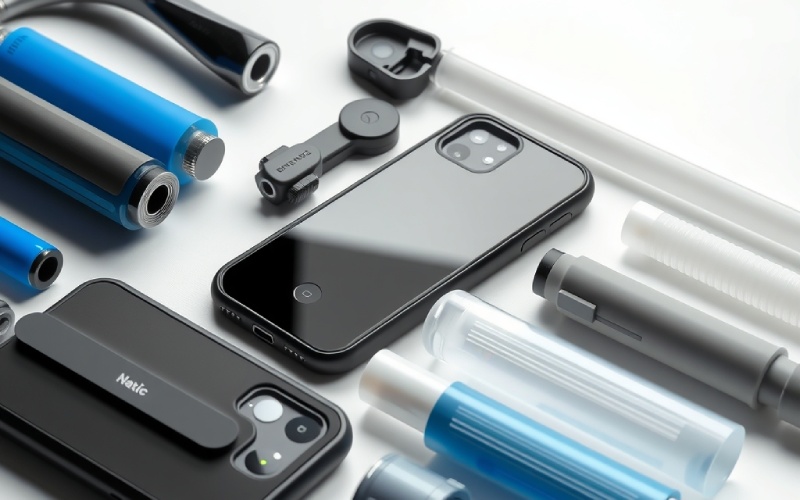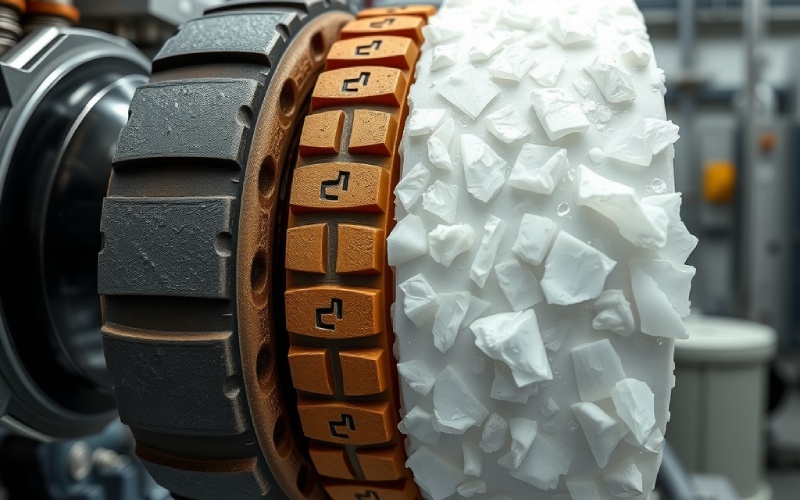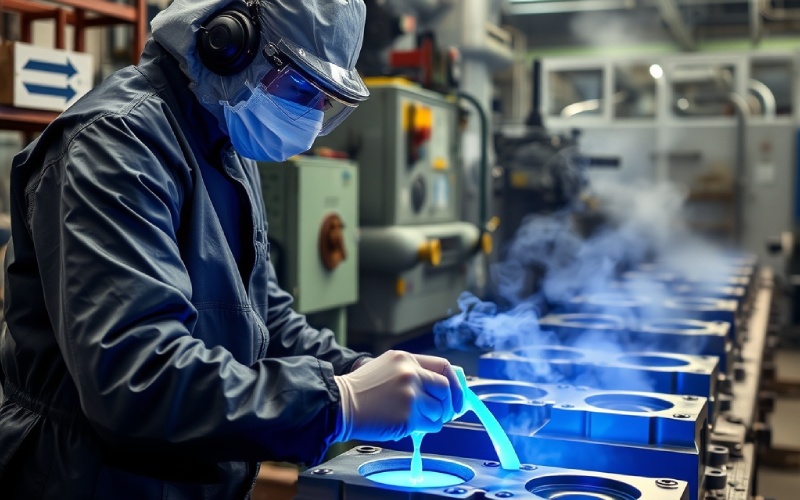Let Istar help you get started on your project with our experience and know-how!
Upload your design files and production requirements and we will get back to you within 30 minutes!

One material has always amazed me with its ability to be used in many different ways and its toughness: urethane. You may have heard it called polyurethane. I am here to tell you it is one of the most helpful materials around. In this article, I will share what I know about urethane. We will look at what it is and how it is made. We will also look at the many amazing ways it is used in our everyday lives. It does not matter if you work in the manufacturing industry or are just curious about the things that make up our world. I believe you will find this look into the world of urethane to be very interesting.
Let’s begin with the simple facts. When I first started to learn about materials, the word “urethane” sounded a little complicated. But it is actually very easy to understand. Urethane is a kind of polymer. You can picture a polymer as a long chain of tiny parts all connected together. These chains are what give materials their special features. For urethane, the links that make up the chain are called carbamate links. This unique chemical design is what makes urethane so great.
You might also hear people say “polyurethane,” which is a more exact name for this polymer. At its heart, urethane is a chemical compound. It can be turned into many different forms. It can be a soft foam, a hard plastic, a tough coat, or a powerful adhesive. This wide range of options is why you can find urethane in so many different things. It all depends on the specific chemical mix and the way it is made. The main things needed are a polyol and an isocyanate. By changing these, I can make a urethane with the exact features I need for a certain task.
Making urethane is a really neat process that I have been lucky enough to see up close. It is all about a chemical reaction. This reaction happens between two main parts: a polyol and an isocyanate. When I mix these two liquids, they react and create the long polymer chains that are urethane. It is a little like baking a cake. You begin with liquid batter, and a chemical reaction turns it into a solid, finished cake.
The real trick, however, is in the recipe. I can control the final features of the urethane by picking the right kind of polyol and isocyanate. I can also add other things to the mix. For instance, if I want to make a soft foam, I will use a certain kind of polyol. I will also add something that makes bubbles in the mixture. If I need a hard, tough plastic, I will use a different recipe that makes a stronger structure. Being able to change the urethane at a chemical level is what makes it so useful in so many different ways.

Over my career, I have worked with many different kinds of urethane. Each one is good for a special job. It is not a material that works for everything. The two main groups I see most often are polyester and polyether urethanes. Polyester urethane is famous for being very good at resisting oils and fuels. This makes it a perfect pick for things like seals and gaskets in the car industry. It also has great abrasion resistance, which means it can handle a lot of rubbing and scraping.
On the other hand, polyether urethane is wonderful in places that are wet and at cold temperatures. This type of urethane is often used for things like tubing and medical tools. Besides these two main kinds, I can also make urethane in a wide range of hardness levels. It can go from a soft, rubbery material to a hard, strong plastic. This amazing ability to change the features of urethane is why it is used in so many different industries. It does not matter if I need something soft and bendy or hard and strong. There is a type of urethane that can get the job done.
I have seen with my own eyes why so many industries depend on urethane. The easy answer is that it is incredibly useful and tough. Just think about it. Here is a material that can be as soft as a rubber band or as hard as many kinds of plastic. This wide range of hardness means I can use urethane for a huge number of things. It is also very strong and can resist many kinds of damage. Urethane is famous for its excellent abrasion resistance. This means it can take a lot of rubbing without getting worn down.
It also has high tear strength, so it is not easy to rip or pull apart. This makes it perfect for things that need to handle a lot of pressure. On top of that, urethane can stand up to water, oil, and many chemicals. This makes it useful for even more things. From a money point of view, the manufacturing processes for urethane can be very low-cost. This makes it a smart money choice for many products. This mix of great performance and good value is a winning combination for any industry. Many industries use urethane because it provides answers that other materials just cannot give.
The car industry is a perfect place to see how great urethane is. I have seen it used in so many different car parts, and it makes a lot of sense. One of the most common ways it is used is in car seats. The cozy foam that makes long car trips easy to handle is often made from flexible urethane foam. This material gives great support and is very durable, making sure the seats keep their shape for a long time.
But it is used for much more than that. Urethane is also used for bumpers, the inside parts of the car, and even as a protective coat on the car’s paint. As a coat, urethane gives a tough, shiny finish. It protects the paint from scratches and bad weather. Hard urethane foam is also used for insulation inside the car. This helps keep the car quiet and the temperature comfortable. The adhesive quality of urethane is also very useful. It is used to glue different parts of the car together. The car industry depends a lot on urethane to make cars safer, more comfortable, and longer-lasting.
You might be shocked to find out how much urethane is in your house. I know I have found it in a lot of places I did not expect. Do you have a favorite comfy sofa to relax on? The cushions are probably made from flexible urethane foam. The same is true for your mattress and the padding under your carpet. These uses of urethane give us comfort and support. They make our homes nicer places to live.
But the use of urethane at home is not just for furniture. Hard urethane foam is an amazing material for insulation. It is often put in the walls and roofs of houses. It helps keep them warm during the winter and cool during the summer. You will also find urethane in your appliances. For example, the insulation inside your refrigerator and freezer is probably a hard urethane foam. And what about that nice, shiny finish on your wood floor? That is likely a urethane coat. It protects the wood and gives it a strong, lasting shine. From the chairs we sit on to the very walls of our homes, urethane has a very important part to play.
The medical world is another place where I have seen the special features of urethane used in very good ways. It can be made to be both bendy and strong. It also resists many liquids. Because of this, urethane is a perfect material for many kinds of medical tools. One common use is in tubing for catheters and other items. Urethane tubing is bendy enough to be comfortable for the person, but it is also strong enough to be trusted.
Besides tubing, urethane is also used in hospital beds, cloths for surgery, and bandages for wounds. It can be made into a soft, bendy material that is also waterproof and simple to clean. This is a big plus in a hospital. I have also seen urethane used in different plastic-molded tools and even in some things put inside the body for a short time. The pharmaceutical industry also uses urethane in some of its work. The use of urethane in medicine shows how useful it is and how it can meet the tough needs of the health care industry.
Yes, for sure. From what I have seen, some of the most common uses of urethane are for making plastics and coatings. Urethane is a very important part of many kinds of plastics. It gives them a special mix of toughness and flexibility. This is why you see urethane used in all sorts of things, from strong phone cases to the wheels on a skateboard. These things need a material that can take a hit and resist scraping, and urethane is perfect for that.
As a coat, urethane is really amazing. I have put urethane coatings on so many surfaces, and the results are always great. A urethane coat adds a clear, strong layer. This layer protects the material underneath from scratches, chemicals, and bad weather. This is why it is so often used on wood floors, furniture, and even cars. The urethane makes a hard, protective shell. It makes the surface look better and helps it last a lot longer. The plastic used in these items is better because of the amazing toughness of urethane.

I get this question a lot, and it is a very important one to talk about. When we are discussing urethane, it is good to know about any safety issues. The chemical parts used to make urethane, especially isocyanates, can be dangerous if they are not handled the right way when it is being made. That is why in a factory setting, there are very strict safety rules to keep workers safe.
After the urethane is fully formed and is in its final shape, like in your chair or on your floor, it is usually thought to be very safe. But it is good to know that in some forms, like ethyl carbamate, urethane can be toxic if you eat it. This is something to know about, especially with foods and drinks that are fermented, where tiny bits of urethane can sometimes be found. For the most part, the finished urethane things we use each day are safe. But it is always smart to be aware of the materials we have in our lives. Urethane can be toxic in certain forms, so it is important to use things the way they are meant to be used.
When I think about the future, I see very good things for urethane. The same things that have made it so popular – its usefulness, its toughness, and its good price – will keep it in demand in many different industries. I believe we will see even more new ideas in urethane recipes. This will lead to new materials with even better features. For example, a lot of work is being done to make urethanes that are better for the planet and made from plants. This would mean we would not have to rely as much on oil.
I also think we will see urethane have an even bigger part in things like clean energy. It could be used in the blades of wind turbines and other parts. The ability to recycle urethane is also getting better. This will make it an even better choice for the environment. The industry is always changing, and I am excited to see what new and wonderful things we will be able to do with this amazing polymer. The story of urethane is not finished, and I am happy to be a part of what comes next.